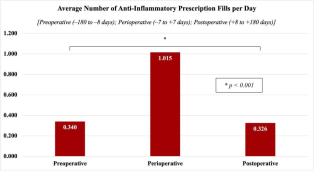Heel Reconstruction Utilizing the Medial Plantar Artery Flap
Case Description
A 56-year-old man was found to have an unknown lesion on his right heel. Shave biopsy demonstrated malignant melanoma. After wide local excision with 3-cm margins, a medial plantar artery flap was utilized to reconstruct the calcaneal soft tissue. The donor site was closed with a skin graft.





Questions
1. Why is the heel difficult to reconstruct?
2. What options are available for heel reconstruction?
3. What is the blood supply to the medial plantar artery flap?
4. Are there benefits to creating an innervated flap?
Q1. Why is the heel difficult to reconstruct?
Heel defects pose significant reconstructive challenges to plastic surgeons worldwide. This is largely due to the anatomically unique structure of the heel and specialized functionality. The glabrous skin of the heel is remarkably thick, measuring approximately 1.4 mm compared with 0.1 mm in other regions.1 This, combined with numerous lobules of subcutaneous adipose tissue and firm tethering to the underlying plantar aponeurosis, allows the heel to withstand significant compressive forces and redistribute them among a large surface area as well as resist shear forces during daily use. Specialized protective sensation allows for changes in position and redistribution of force during prolonged use. In addition to the vital functional importance, the heel serves an important psychosocial role through the use of socially acceptable footwear.2 The culmination of these unique properties of the heel are the root cause of reconstructive challenge. Unfortunately, no single reconstructive procedure provides all of these unique features, requiring the surgeon and patient to tailor each reconstruction to the specific needs of the patient.
Q2. What options are available for heel reconstruction?
Numerous options exist for reconstructing the heel. Although no single option reigns supreme, each presents unique advantages and disadvantages. The simplest method of plantar reconstruction consists of split- and full-thickness skin grafts, dermal autografts, or dermal substitutes. These options are relatively simple, harbor low donor site morbidity, offer rapid recovery, and have success rates of up to 81%.3 However, these are thin, insensate, and structurally weak reconstructive options that ignore many of the heels inherent specialized functions. Regional fasciocutaneous flap options include the reverse sural artery flap and the medial plantar artery flap. These options can resurface heel defects of up to 338 cm2 and 90 cm2, respectively.4,5 Both flaps provide durable, well-vascularized coverage along with the ability to convey protective sensation to the defect. However, they require greater technical skill and often require skin grafting of the donor defect. Free tissue transfer, including latissimus dorsi and anterolateral thigh, allow for coverage of large heel defects when local and regional options are unavailable or inadequate. Free tissue transfer requires specialized equipment, advanced training, complex hospital infrastructure, and prolonged postoperative rehabilitation, reserving this for large, complex defects.
Q3. What is the blood supply to the medial plantar artery flap?
The medial plantar artery flap transfers the non–weight-bearing medial plantar region of the foot to the heel. Because the skin of the sole is relatively immobile, the donor defect is commonly closed with a skin graft. This fasciocutaneous perforator flap is largely based on the superficial branch of the medial plantar artery.6 The pedicle is reliably found between the abductor hallucis and flexor digitorum brevis muscles. Venous drainage is supplied by venae comitantes accompanying arterial pedicle. The medial plantar nerve is routinely dissected with the flap, allowing for an immediately sensate flap without need for nerve coaptation.
Q4. Are there benefits to creating an innervated flap?
Comparisons between sensate and insensate flaps for heel reconstruction demonstrate an earlier return to daily living activities and normal gait in sensate heel reconstruction compared with insensate.7 Sensate heel reconstructions demonstrate similar pressure distribution compared with contralateral normal heels during weight-bearing, whereas patients with non-sensate reconstructions tend to alter their gait to decrease pressure on the reconstruction. Despite these differences, long-term follow-up studies have demonstrated no difference in activities of daily living and no difference in minor defects resulting in revisionary procedures in non-sensate flap reconstructions.
Summary
This patient presented with a large heel defect reconstructed with the medial planar artery flap. This flap provides durable, well-vascularized, sensate tissue with minimal donor site morbidity. All reconstructive surgeons should be familiar with this workhorse flap for heel reconstruction.
Acknowledgments
Affiliations: 1Michigan State University College of Human Medicine, Grand Rapids, MI; 2Spectrum Health/Michigan State University Plastic and Reconstructive Surgery Residency, Grand Rapids, MI; Orthopaedic Associates of Michigan, Grand Rapids, MI
Correspondence: Arminder Kaura, MD; akaura10@gmail.com
Ethics: This study conforms to the Declaration of Helsinki ethical principles for medical research.
Disclosures: The authors have no relevant financial or nonfinancial interests to disclose.
References
1. Thoolen M, Ryan TJ, Bristow I. A study of the skin of the sole of the foot using high-frequency ultrasonography and histology. Foot. 2000;10(1):14-17. doi:10.1054/FOOT.1999.0568
2. Crowe CS, Cho DY, Kneib CJ, Morrison SD, Friedrich JB, Keys KA. Strategies for reconstruction of the plantar surface of the foot: a systematic review of the literature. Plast Reconstr Surg. 2019;143(4):1223-1244. doi:10.1097/PRS.0000000000005448
3. Yan H, Liu S, Gao W, et al. Management of degloving injuries of the foot with a defatted full-thickness skin graft. J Bone Joint Surg Am. 2013;95(18):1675-1681. doi:10.2106/JBJS.L.01085
4. Miyamoto Y, Ikuta Y, Shigeki S, Yamura M. Current concepts of instep island flap. Ann Plast Surg. 1987;19(2):97-102. doi:10.1097/00000637-198708000-00001
5. Ayyappan T, Chadha A. Super sural neurofasciocutaneous flaps in acute traumatic heel reconstructions. Plast Reconstr Surg. 2002;109(7):2307-2313. doi:10.1097/00006534-200206000-00022
6. Morrison WA, Crabb DMK, O’Brien BMC, Jenkins A. The instep of the foot as a fasciocutaneous island and as a free flap for heel defects. Plast Reconstr Surg. 1983;72(1):56-63. doi:10.1097/00006534-198307000-00013
7. Kuran I, Turgut G, Bas L, Ozkan T, Bayri O, Gulgonen A. Comparison between sensitive and nonsensitive free flaps in reconstruction of the heel and plantar area. Plast Reconstr Surg. 2000;105(2):574-580. doi:10.1097/00006534-200002000-00015
















